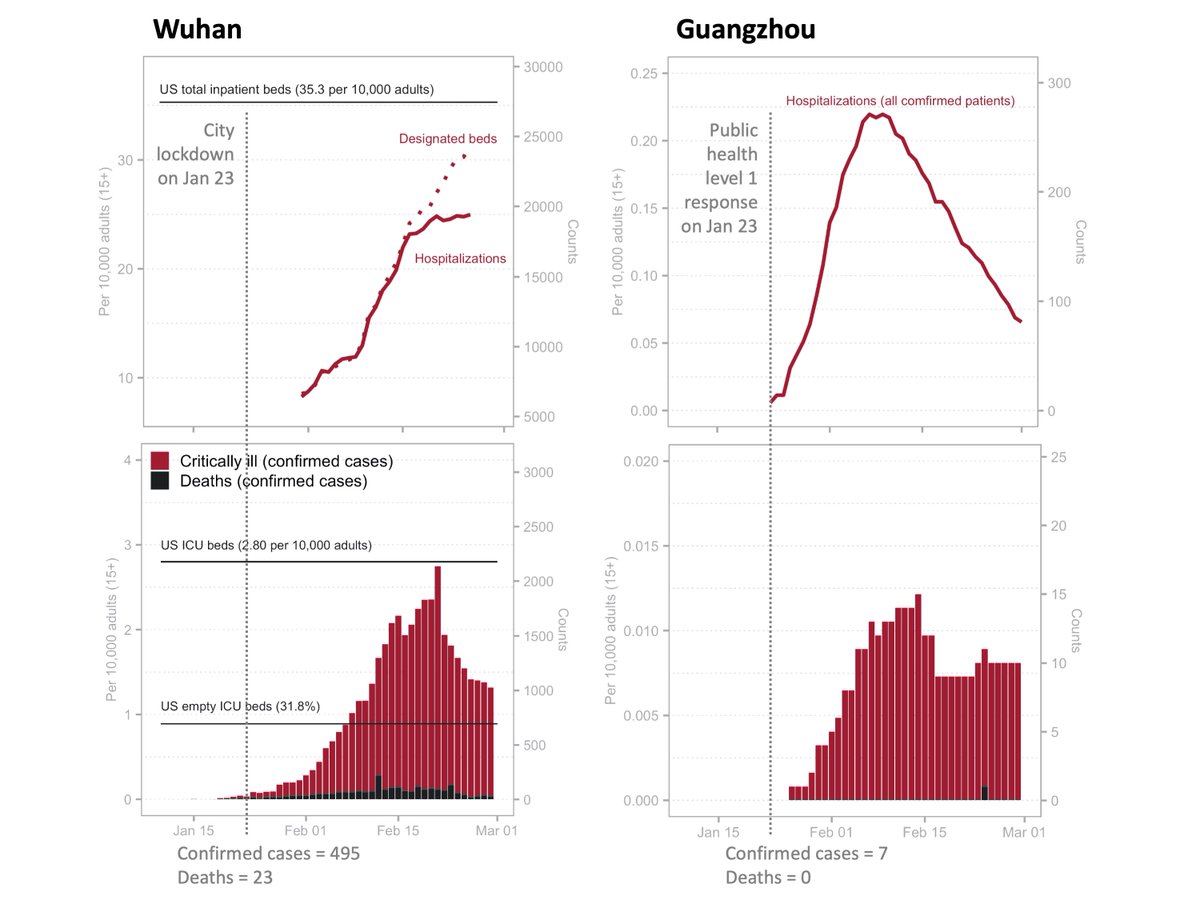2) Early intervention means before it feels bad. Guangzho intervened when they had 7 confirmed cases & 0 deaths. Wuhan's came when they had 495 confirmed cases, 23 dead
4) Slowing transmission did not immediately relieve health care burden. People take a long time (weeks) to get really sick, so the peak burden trailed peak transmission by weeks esp in Wuhan





